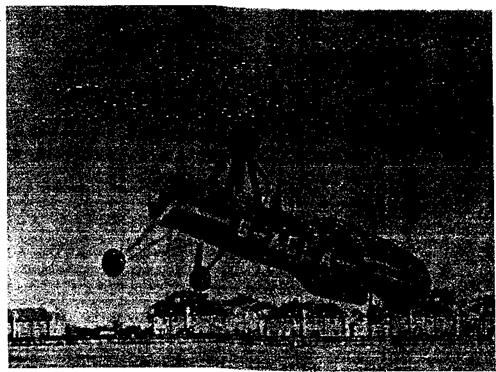Giving Better Control: Orientable Rotors
Peck (1934) conducted landing tests with the autogiro to help to quantify the poor roll control response that pilots found when autogiros with conventional airplane control surfaces flew at very low airspeed. Because the autogiro could be landed at almost zero ground speed, especially into a wind, the ineffectiveness of the ailerons under these conditions was a serious deficiency in the machine’s handling qualities and several crashes occurred. This gave the machine a less than desirable reputation amongst pilots and it was clear that the problem needed to be rectified by using some form of rotor control. While Cierva had initially investigated a disk tilting mechanism on the C-4 to provide roll control, the system was not viable at that time.
By 1931, Cierva had introduced the directly orientable rotor control. This “rocking head” design placed the rotor on a Universal joint or gimbal and essentially solved the control problem by allowing the entire rotor shaft to be tilted in any direction and so inclining the rotor lift force. This innovation allowed Cierva to dispense finally with the stub wings and the elevator: the rotor had enough control capability now for both roll and pitch. The rudder was retained for directional control. During 1932, the new device was tested on a C-19, which had no conventional airplane features except for a vertical tail and a rudder. The controls for the original tilting shaft design were shortly thereafter replaced by a “hanging stick” from the rotor hub to the cockpit, which gave the pilot both good control authority and also relatively light control forces in both roll and pitch. The device quickly became the new standard and was incorporated on all Cierva Autogiros manufactured after 1932, including the C-30 (Fig. 12.15), which became one of the most famous autogiros with nearly 200 being built in Britain, the United States, and France. However, the rotor vibrations were also transmitted through the control stick and this made the machines tiring to fly.
|
Figure 12.15 A version of the Cierva C-30 showing for the first time the absence of conventional wings and ailerons and “hanging stick” design for “direct” rotor control. |












